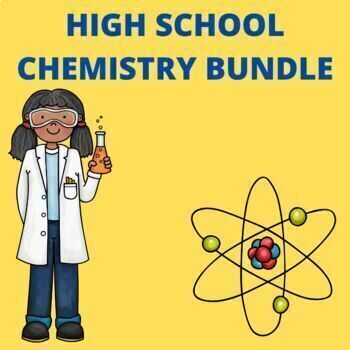High School Chemistry MEGA Bundle
- Zip
- Webquests

Products in this Bundle (59)
showing 1-5 of 59 products
Bonus
Description
Here is the bundle you have been looking for to change your chemistry class from one students have to take to one that they want to. Helping students understand chemistry That can be a tough task. The lessons have all been student tested for many years. The bundle includes labs, worksheets, stoichiometry, and web quests.
Labs
Butter lab
Chemical and Physical change
Elephant toothpaste
Test for Heroin, LSD, and THC
Making cheese lab
Recycle Paper Ecology lab
Snow Globe Density
Solubility Curve Rock Candy
Tie-Dye lab
Materials
Active Dry yeast
Hydrogen Peroxide
Aluminum oxide
Ammonia
Baby food jars
Benedict’s solution.
Candy Canes
Ceiling tile
Corn syrup
Dawn dishwashing detergent
Duquenois
Dye Solutions
Ehrlich
Food coloring
Glitter
Heavy marble
Heavy whipping cream
Marijuana
Paper
Peanuts
pH paper
Milk
Poinsettia
Salt
Shaving cream
Silicate dioxide
Silver bromide
Sodium Fluoride
Sugar
Vinegar
Art Project
Classroom decorations
Ceiling tiles
Holiday lessons
Chemistry Christmas Candy cane
Christmas Cookie Mystery Lab
Christmas Polar and Nonpolar Molecules lab
Fun sheet Turkey
Poinsettia Lab
Thanksgiving PowerPoint Electron Energy Levels
Shaving cream ornaments
Valentine lab
Review Sheets
Coloring Lesson on molecules
Chemistry Pre Test
Stoichiometry
Real Word Stoichiometry Scenarios
Web-based lessons
Chemistry Deadly Metals mystery PowerPoint
Chemistry -Environmental Infographic
Chemistry Bingo
Web quests
Great Outdoors
Red Ribbon Vaping risks
Mardi Gras
Please feel free to ask any questions before buying
Thank you


